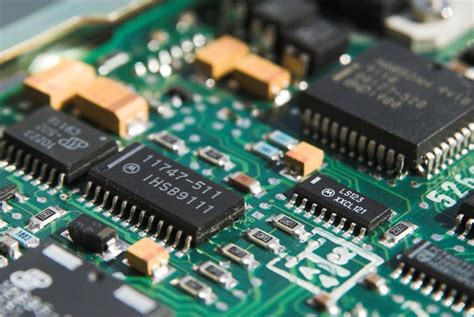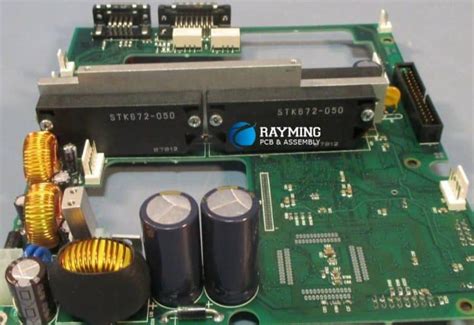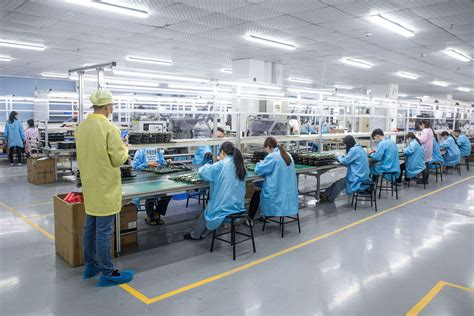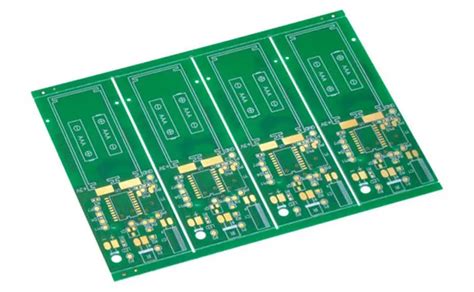China high speed pcb layout
Innovations In High-Speed PCB Layout Design For China’s Tech Industry
In recent years, China’s tech industry has witnessed remarkable advancements, particularly in the realm of high-speed printed circuit board (PCB) layout design. As the demand for faster and more efficient electronic devices continues to surge, the need for innovative PCB solutions has become increasingly critical. High-speed PCB layout design is pivotal in ensuring that electronic components can communicate effectively at rapid speeds, a necessity for modern applications such as telecommunications, computing, and consumer electronics. Consequently, China’s tech industry has been at the forefront of developing cutting-edge techniques and technologies to address these challenges.
One of the primary innovations in high-speed PCB layout design is the implementation of advanced materials.
Traditional materials, such as FR-4, are often inadequate for high-speed applications due to their limited electrical performance. In response, Chinese manufacturers have increasingly adopted high-performance laminates that offer superior signal integrity and reduced electromagnetic interference. These materials, including polytetrafluoroethylene (PTFE) and ceramic-filled laminates, provide the necessary dielectric properties to support high-frequency signals, thereby enhancing the overall performance of the PCB.
Moreover, the integration of sophisticated design software has revolutionized the PCB layout process.
Advanced simulation tools enable designers to model and analyze the behavior of high-speed signals within the PCB, allowing for the optimization of trace routing and component placement. This capability is crucial in minimizing signal loss and ensuring reliable data transmission. By leveraging these software solutions, Chinese engineers can predict potential issues and make informed design decisions, ultimately leading to more robust and efficient PCB layouts.
In addition to material and software advancements, the miniaturization of components has played a significant role in high-speed PCB design.
As electronic devices become increasingly compact, the need for smaller and more densely packed PCBs has grown. This trend has driven Chinese manufacturers to develop innovative techniques for integrating multiple layers and components within a limited space. Techniques such as microvia technology and high-density interconnect (HDI) designs have become commonplace, enabling the creation of complex multilayer PCBs that support high-speed data transfer while maintaining a compact form factor.
Furthermore, the emphasis on thermal management has become a critical consideration in high-speed PCB layout design.
As electronic components operate at higher speeds, they generate more heat, which can adversely affect performance and reliability. To address this issue, Chinese designers have incorporated advanced thermal management solutions, such as heat sinks, thermal vias, and conductive cooling materials, into their PCB layouts. These innovations help dissipate heat effectively, ensuring that the components remain within their optimal operating temperature range.
The collaborative efforts between academia and industry have also contributed significantly to the advancements in high-speed PCB layout design in China.
Research institutions and universities have partnered with tech companies to explore new methodologies and technologies, fostering an environment of innovation and knowledge exchange. This collaboration has led to the development of novel design techniques and the refinement of existing practices, further propelling China’s tech industry to the forefront of high-speed PCB design.
In conclusion, the innovations in high-speed PCB layout design have been instrumental in supporting the rapid growth of China’s tech industry.
Through the adoption of advanced materials, sophisticated design software, miniaturization techniques, and effective thermal management solutions, Chinese manufacturers have successfully addressed the challenges associated with high-speed applications. As the demand for faster and more efficient electronic devices continues to rise, these innovations will undoubtedly play a crucial role in shaping the future of PCB design and the broader tech landscape in China.

Challenges And Solutions In High-Speed PCB Layout For Chinese Manufacturers
The rapid advancement of technology has significantly influenced the electronics industry, particularly in the realm of high-speed printed circuit board (PCB) design. For Chinese manufacturers, the challenges associated with high-speed PCB layout are multifaceted, requiring a nuanced understanding of both technical and logistical aspects. As the demand for faster and more efficient electronic devices continues to grow, Chinese manufacturers are compelled to address these challenges with innovative solutions.
One of the primary challenges in high-speed PCB layout is signal integrity.
As the frequency of operation increases, issues such as signal reflection, crosstalk, and electromagnetic interference become more pronounced. These issues can lead to data corruption and system failures, which are unacceptable in high-performance applications. To mitigate these problems, Chinese manufacturers are increasingly adopting advanced simulation tools that allow for the precise modeling of signal behavior. By simulating the electrical characteristics of a PCB design before physical prototyping, manufacturers can identify and rectify potential issues early in the design process.
Moreover, the miniaturization of electronic components poses another significant challenge.
As devices become smaller, the density of components on a PCB increases, leading to more complex routing requirements. This complexity can result in longer design cycles and increased production costs.
To address this, Chinese manufacturers are leveraging automated design tools that optimize the placement and routing of components. These tools not only reduce the time required for design but also enhance the overall reliability of the PCB by ensuring optimal signal paths.
Thermal management is another critical concern in high-speed PCB design.
The increased power density in modern electronic devices generates significant heat, which can adversely affect performance and longevity. Effective thermal management strategies are essential to dissipate heat and maintain the operational stability of the device. Chinese manufacturers are employing various techniques, such as the use of thermal vias, heat sinks, and advanced materials with high thermal conductivity, to manage heat dissipation effectively.
In addition to technical challenges, Chinese manufacturers must also navigate logistical hurdles.
The global supply chain for electronic components is complex and often subject to disruptions. Ensuring a steady supply of high-quality components is crucial for maintaining production schedules and meeting market demands.
To mitigate supply chain risks, many Chinese manufacturers are diversifying their supplier base and investing in local production capabilities. This approach not only reduces dependency on foreign suppliers but also enhances the resilience of the manufacturing process.
Furthermore, the rapid pace of technological change necessitates continuous investment in research and development.
Chinese manufacturers are increasingly collaborating with academic institutions and research organizations to stay at the forefront of technological advancements. These partnerships facilitate the exchange of knowledge and expertise, enabling manufacturers to develop cutting-edge solutions for high-speed PCB design challenges.
In conclusion, while the challenges associated with high-speed PCB layout are significant, Chinese manufacturers are well-equipped to address them through a combination of advanced technology, strategic partnerships, and innovative design practices.
By focusing on signal integrity, component miniaturization, thermal management, and supply chain resilience, they are not only overcoming current obstacles but also positioning themselves for future success in the competitive global electronics market. As the demand for high-speed electronic devices continues to rise, the ability to efficiently and effectively design high-speed PCBs will remain a critical factor in the success of Chinese manufacturers.

The Role Of High-Speed PCB Layout In China’s 5G Network Expansion
The rapid expansion of 5G networks in China has been a focal point of technological advancement, with high-speed printed circuit board (PCB) layout playing a crucial role in this development. As the backbone of electronic devices, PCBs are integral to the performance and reliability of 5G infrastructure.
The high-speed PCB layout, in particular, is essential for managing the increased data rates and complex signal integrity requirements that 5G technology demands. Consequently, understanding the role of high-speed PCB layout in China’s 5G network expansion is vital for appreciating the broader implications of this technological leap.
To begin with, the transition to 5G networks necessitates a significant upgrade in the design and functionality of PCBs.
Unlike previous generations, 5G technology requires PCBs that can handle higher frequencies and faster data transmission rates. This is where high-speed PCB layout becomes indispensable.
By optimizing the arrangement of components and the routing of electrical signals, high-speed PCB layout ensures that the circuit can operate efficiently at the elevated speeds required by 5G. This involves meticulous attention to detail, as even minor design flaws can lead to signal degradation, increased electromagnetic interference, and overall system instability.
Moreover, the complexity of 5G networks, characterized by massive multiple-input multiple-output (MIMO) technology and beamforming capabilities, further underscores the importance of high-speed PCB layout. These advanced features rely on precise timing and synchronization, which can only be achieved through careful PCB design. High-speed PCB layout techniques, such as controlled impedance routing and differential pair routing, are employed to maintain signal integrity and minimize losses. These techniques are critical in ensuring that the 5G network can deliver the promised high data rates and low latency.
In addition to technical considerations, the role of high-speed PCB layout in China’s 5G network expansion is also influenced by economic and strategic factors.
China has positioned itself as a global leader in 5G technology, with significant investments in research and development. The ability to produce high-quality PCBs domestically is a strategic advantage, reducing reliance on foreign suppliers and enhancing the country’s technological self-sufficiency. As a result, Chinese companies are increasingly focusing on developing advanced PCB manufacturing capabilities, including high-speed layout design, to support the rapid deployment of 5G infrastructure.
Furthermore, the emphasis on high-speed PCB layout aligns with China’s broader goals of digital transformation and smart city development.
The deployment of 5G networks is expected to drive innovation across various sectors, including healthcare, transportation, and manufacturing. High-speed PCBs are essential for enabling the connectivity and data processing capabilities required by these applications. By investing in high-speed PCB layout, China is not only advancing its telecommunications infrastructure but also laying the groundwork for future technological innovations.
In conclusion, high-speed PCB layout is a critical component of China’s 5G network expansion, addressing both the technical challenges and strategic objectives associated with this transformative technology.
As 5G continues to evolve, the demand for sophisticated PCB designs will only increase, underscoring the importance of ongoing research and development in this field. By prioritizing high-speed PCB layout, China is well-positioned to maintain its leadership in the global 5G landscape and drive the next wave of technological progress.
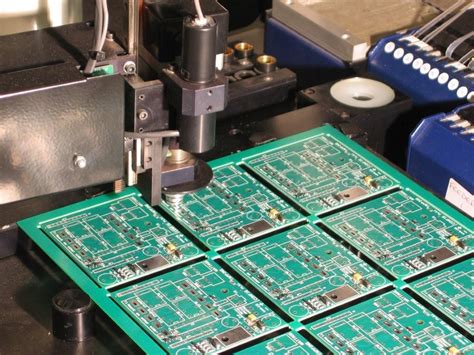
Best Practices For High-Speed PCB Layout In China’s Electronics Sector
In the rapidly evolving landscape of China’s electronics sector, the demand for high-speed printed circuit board (PCB) layouts has surged, driven by the proliferation of advanced technologies such as 5G, artificial intelligence, and the Internet of Things (IoT). As these technologies require faster data processing and transmission, the need for efficient and reliable high-speed PCB designs has become paramount. To meet these demands, engineers and designers must adhere to a set of best practices that ensure optimal performance and manufacturability of high-speed PCBs.
One of the fundamental principles in high-speed PCB layout is the careful management of signal integrity.
Signal integrity issues, such as reflections, crosstalk, and electromagnetic interference (EMI), can significantly degrade the performance of high-speed circuits. To mitigate these issues, designers in China’s electronics sector often employ techniques such as controlled impedance routing, differential pair routing, and the use of ground planes.
Controlled impedance routing ensures that the impedance of the transmission lines is consistent, minimizing signal reflections.
Differential pair routing, on the other hand, helps reduce electromagnetic interference by ensuring that any noise affecting one line is canceled out by the noise on the adjacent line. Additionally, incorporating ground planes into the PCB design provides a return path for signals, further enhancing signal integrity.
Another critical aspect of high-speed PCB layout is the management of power integrity.
As devices become more complex and power-hungry, maintaining stable power delivery to all components is crucial. To achieve this, designers often use power distribution networks (PDNs) that include decoupling capacitors strategically placed near power pins to filter out noise and stabilize voltage levels. Furthermore, employing a multi-layer PCB design allows for dedicated power and ground planes, which help reduce power supply noise and improve overall power integrity.
Thermal management is also a key consideration in high-speed PCB design, particularly in China’s electronics sector, where devices are often compact and densely packed.
Excessive heat can lead to component failure and reduced reliability. To address this, designers use thermal vias, heat sinks, and thermal pads to dissipate heat effectively. Additionally, selecting materials with high thermal conductivity and designing PCBs with adequate spacing between components can further enhance thermal performance.
Moreover, manufacturability is an essential factor in high-speed PCB layout.
As China’s electronics sector is characterized by high-volume production, ensuring that PCBs can be manufactured efficiently and cost-effectively is crucial. Designers must consider factors such as layer count, trace width, and spacing to ensure that the PCB can be produced using standard manufacturing processes. Collaborating closely with manufacturers during the design phase can help identify potential issues early and streamline the production process.
In conclusion, the best practices for high-speed PCB layout in China’s electronics sector revolve around managing signal integrity, power integrity, thermal performance, and manufacturability. By adhering to these principles, designers can create PCBs that meet the demands of modern high-speed applications, ensuring reliable performance and efficient production. As the electronics industry continues to advance, staying abreast of the latest design techniques and technologies will be essential for maintaining a competitive edge in this dynamic field.

